We heard the first screams and whistles from the top of the trees, far above our heads. I smiled to Frederik: the first parrots had arrived. Binoculars and camera pointed towards the small opening in the trees, we were ready for the show.
It was 06.30 AM and we were sitting at the edge of the Ungwe mineral licks, a few hours walk from the Dian Fossey base camp across the river Lowa. Mineral licks are natural openings inside the forests where large numbers of animals gather to eat or drink. In these licks, there are no trees. The soil is covered in grass, mosses and lots of water.
There are nine mineral licks at the Nkuba Conservation Area. Each of them is a wildlife paradise : they attract African Grey Parrots at dawn, African Green Pigeons at dusk and Forest Buffalos at night. We don’t know yet why so many animals come to the licks, but they might look for the minerals, and especially salt, contained in the soil they eat or the water they drink there.
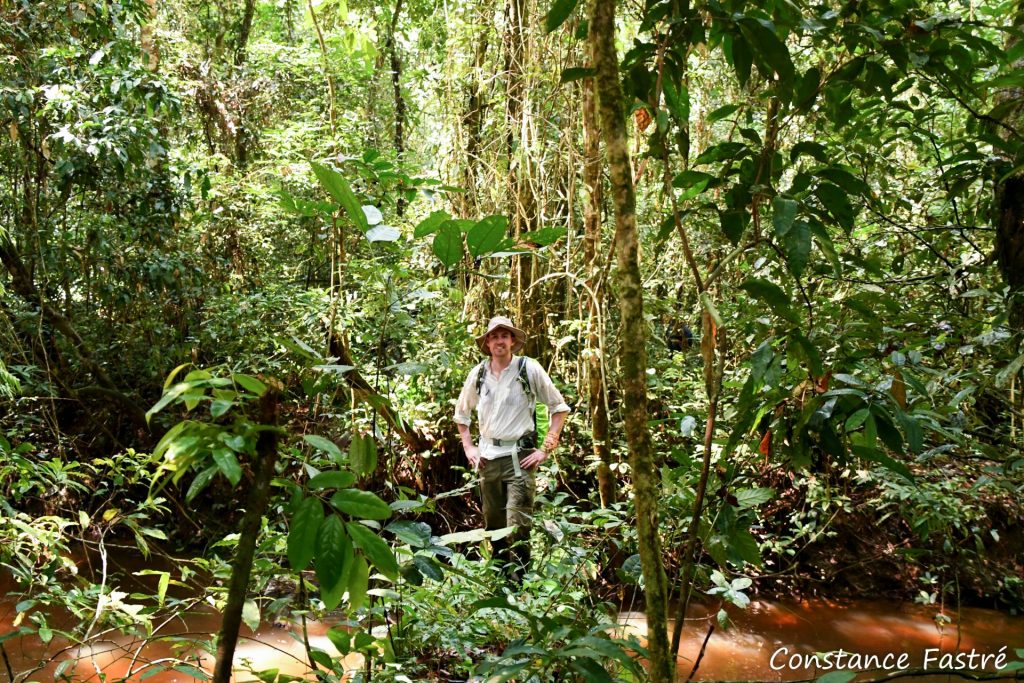
I have loved parrots since I studied the Red-Fronted Macaws in Bolivia. So naturally, when I heard it was possible to watch a gathering of African Grey Parrots in Ungwe, Frederik and I both signed up for it! We got up at 4.30 AM on 16 December to make sure we’d be on time at the nearby salt lick. It was crucial we would arrive at the observation point before the parrots did to make sure we would not scare them.
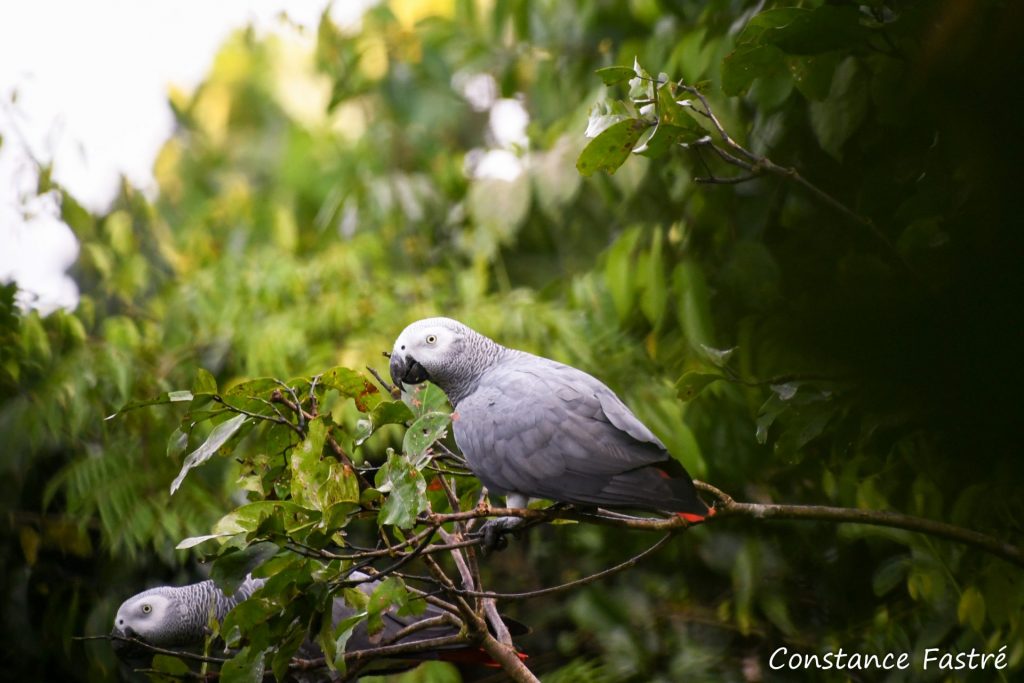
The parrots coming to the salt licks follow a very specific ritual. It’s a little like attending a choreographed show. The show begins with a concert when a few parrots perched on top of the trees around the lick start whistling and calling. Soon, more parrots come flying in from all directions to perch with those singing, adding their voices to the choir. It was beautiful because unlike most parrots, African Grey Parrots are incredibly melodious.
Listen here to the Grey Parrot choir of the Ungwe mineral licks
The music was all around us, yet the parrots remained invisible. Until we spotted a few shapes in the sky, in the open area in front of us. A few parrots were circling high above the lick. Do they want to make sure it is safe to land? As we watched, the birds began flying lower and lower until one landed on the water-logged soil. This was the signal the other parrots had been waiting for: within seconds, hundreds of them were on the ground, playing, screaming, drinking and eating. The sky was crowded with pearly grey shapes and flashes of red. The air was filled with screams. We did not know where to watch, on the ground, in the air, the parrots were everywhere. The show was in full swing.
Of course, Frederik and I could have stayed forever to watch this unique spectacle of nature. But we still had to walk back to the base, so we crept away as silently as we could and left the parrots to their breakfast.
Why so many parrots and other animals gather in the salt licks is still a mystery. Is the water saltier than elsewhere in the forest? Do they come to the licks to eat special plants? With the help of the DFGF team, Frederik and I can’t wait to find out which species visit the licks and why.
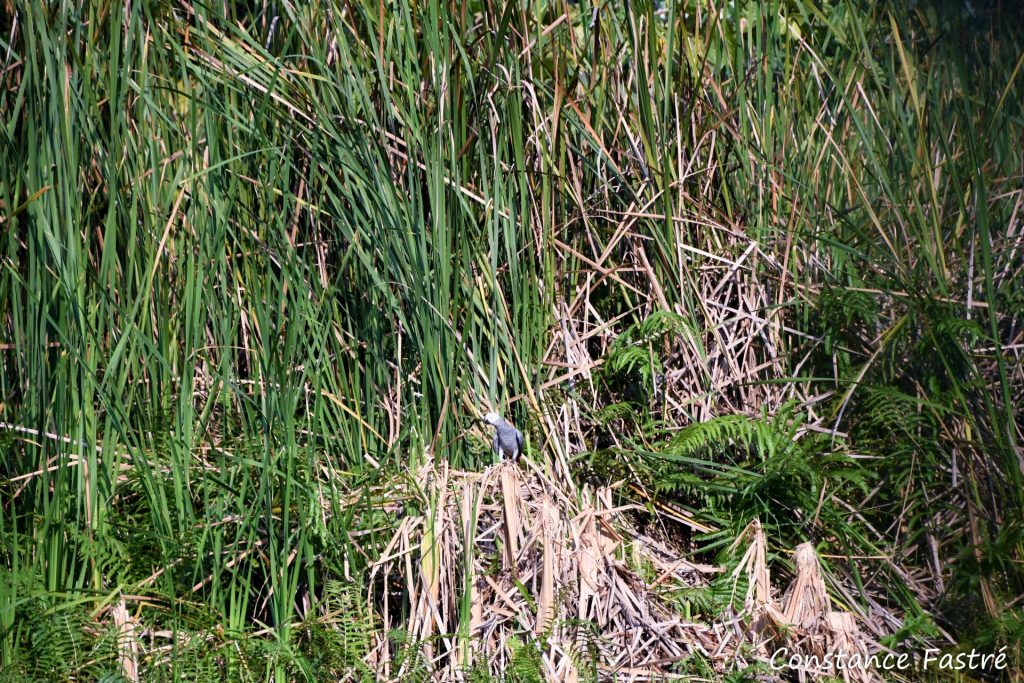
You love parrots? Don’t miss our post about the gorgeous Red-Fronted Macaws in Bolivia!


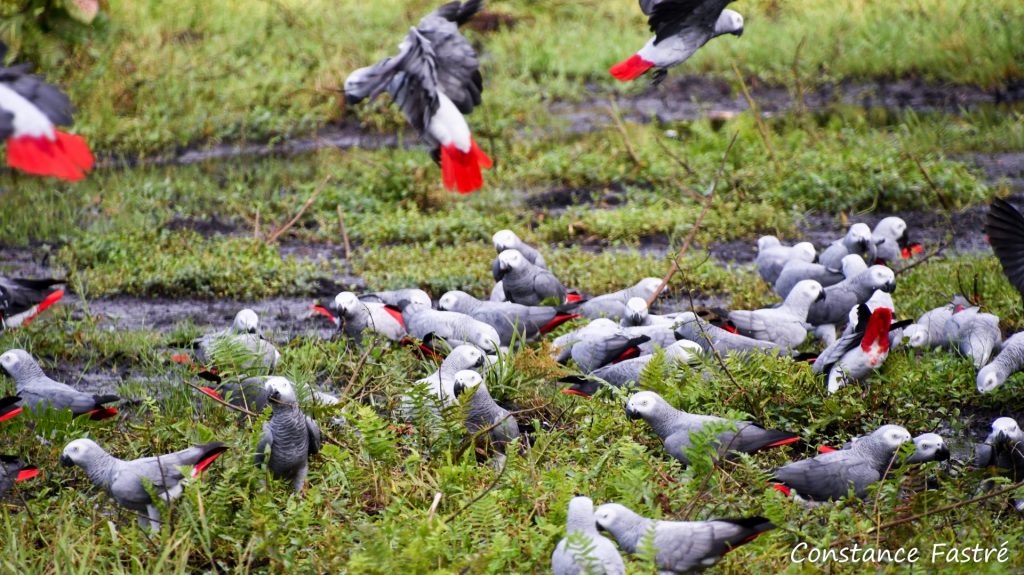
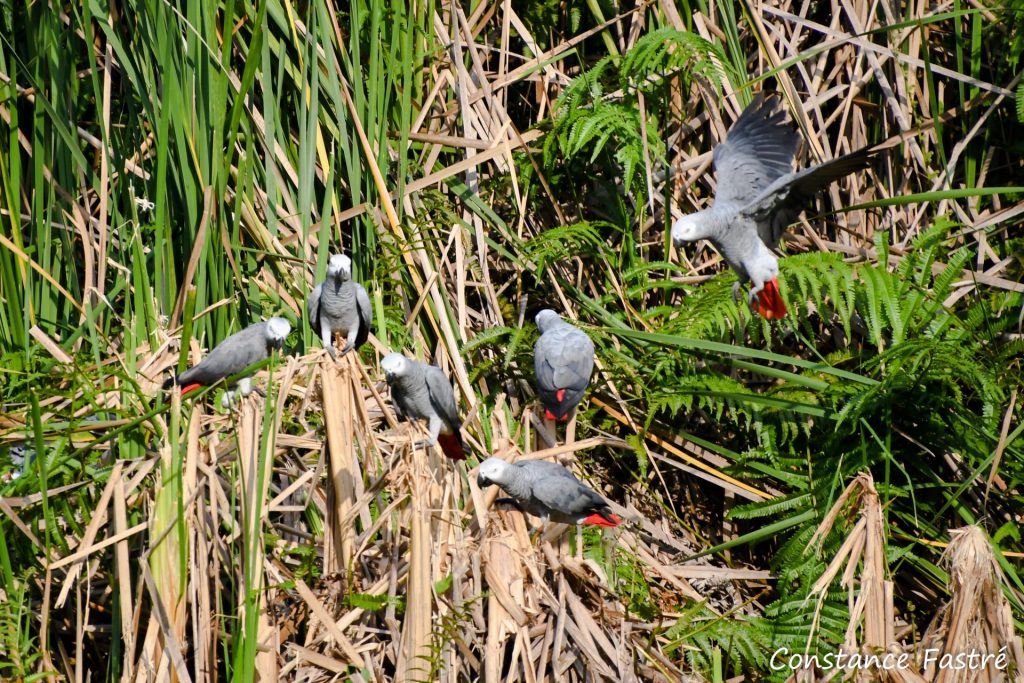
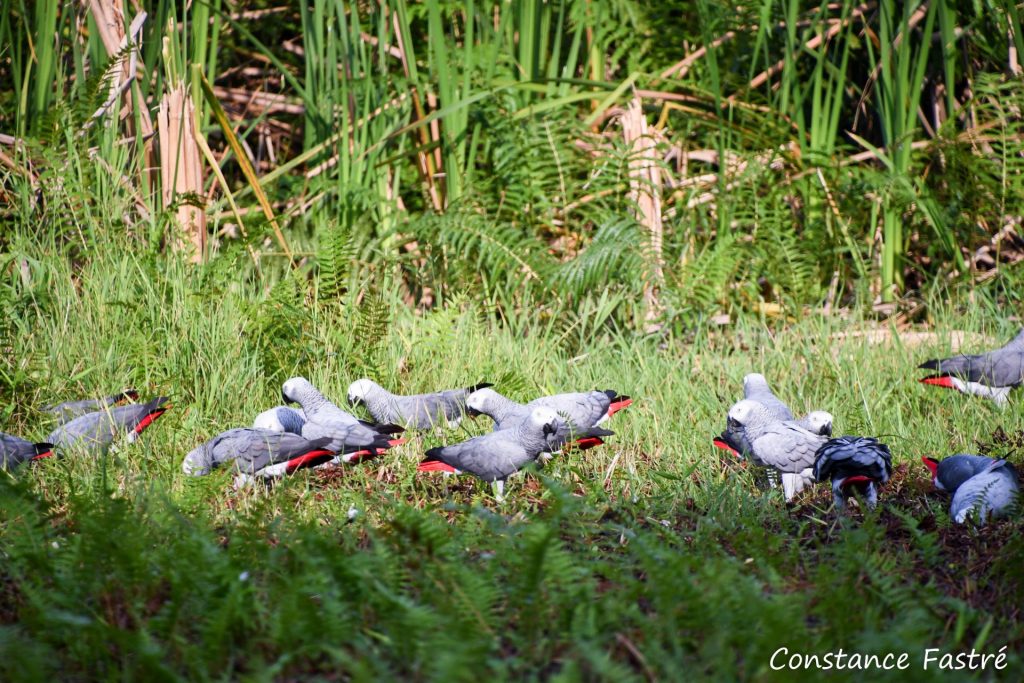
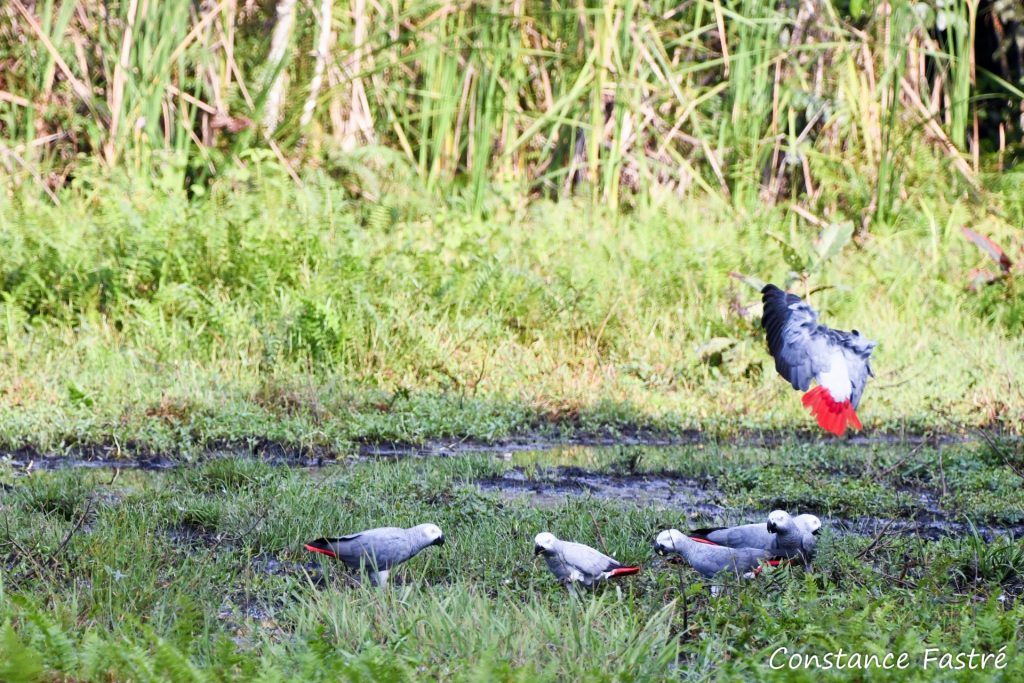
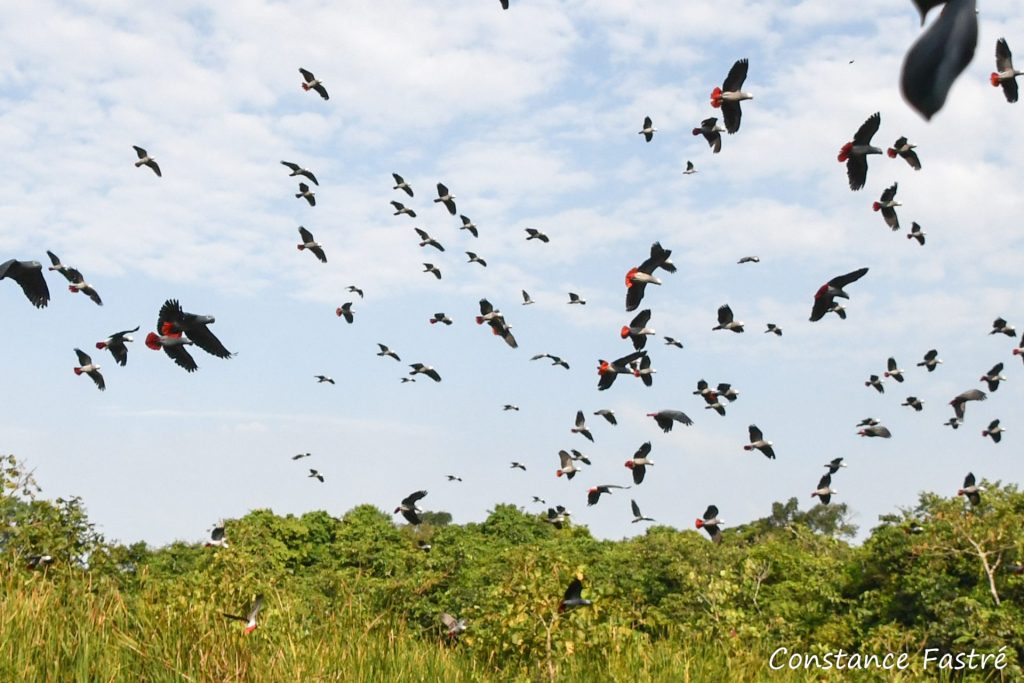
fantasties da zijn allemaal aras
Bedankt Lisette, aras komen alleen voor in Zuid Amerika en zijn te herkennen aan hun lange staart. De grijze roodstaart is dus wel een papegaai maar geen ara.